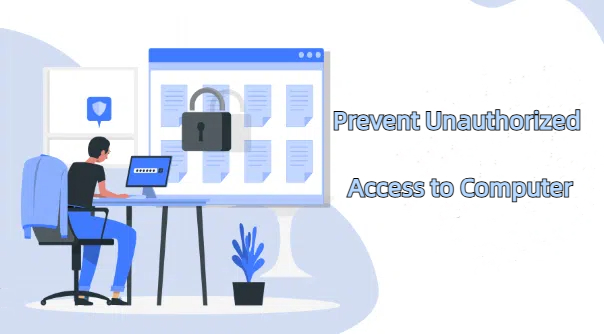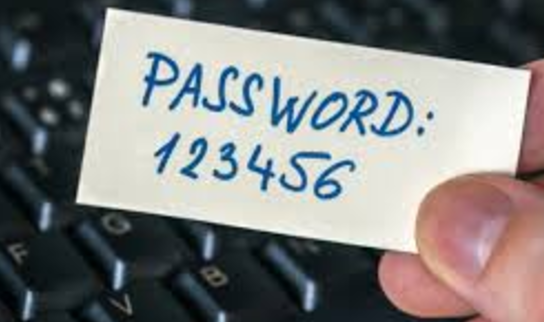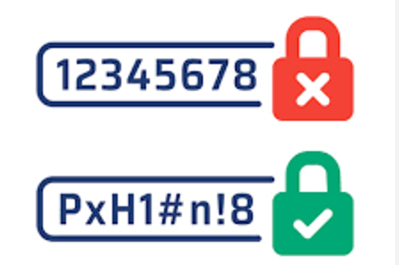How to Secure Your Computer from Unauthorized Access?
Unauthorized computer access simply refers to someone gaining access to your computing device without permission. Here is a typical unauthorized access example: An attacker could for example send a carefully crafted phishing email to an employee of a bank. The employee, trusting the email's authenticity, clicks the link or opens the attachment, unknowingly installing malware on their computer or providing login credentials to the attacker. In such a scenario, the malicious user can access computers to access data or cripple operations. This can prove costly particularly in an enterprise setting where it can lead to a data or cybersecurity breach.
This is just one scenario illustrating why it's worth knowing how to secure your computer from unauthorized access. Here is a comprehensive guide on how to effectively secure your computers from unauthorized access.

1Why Unauthorized Access Occurs?
Now that you understand the causes and risks associated with unauthorized access, perhaps the most important part is knowing how to secure your computer from this menace.
Whether you are dealing with personal or business computers, here are some of the top ways to prevent unauthorized access to your computers.
1Weak passwords
Using simple and guessable passwords like 123456, users’ birthday date, and department name among others can easily result in unauthorized access. With sophisticated password unlock tools, it is much easier to unlock weak passwords compared to strong passwords.

2Unsecure network connection
An unsecured network is a network, whether wireless or wired, that lacks physical or software encryption to prevent unauthorized users from accessing the network.
A good example is public Wi-Fi which anyone can access without signing in with passwords or user IDs. When you use such networks, hackers can easily send malicious files, access your computer, and retrieve critical information.
3Accidentally sharing passwords or leaving devices unlocked and unattended
AUser passwords are sensitive and should not be shared. If you accidentally reveal your computer passwords and fall into the hands of attackers, it becomes easier for them to access and wreak havoc on your computer.
Additionally, leaving your computer unlocked or unattended even when you are not physically present can make it easier for unauthorized users to access your computer and data.
4Unknown software and malware
Some attackers use malicious apps to gain access to your computer. This is common with apps you download from unknown sources. These apps may collect important information from your computer that can be used by these attackers to access your computer.
5Hacker attack
Hackers can use various techniques to bypass access restrictions on your computer. They always take advantage of your computer system flows to initiate unauthorized access and perpetrate their malice, usually ransomware.
6Incident access to unsecured websites and phishing emails
Many attackers use phishing emails and website URLs to access computers without authorization. In fact, some attackers use AI-powered phishing campaigns to create more convincing and personalized phishing emails that can even trick seasoned IT professionals into revealing their login or sensitive information.
2The Risks of Unauthorized Access
While there are many causes of unauthorized access, it is important to understand the risks it poses on your computers/systems. These risks vary in magnitude and others can leave long-lasting effects. To easily visualize these risks, we break them into two broad categories namely personal and business risks.
For Personal
- Data breach: Your personal data is important and ought to remain private. Unauthorized access may lead to the disclosure of such personal privacy and sensitive information to unwanted people and can be used to pull down your reputation or simply expose you. Remember it can be costly or even impossible to reverse the damage.
- Identity theft: Identity theft has become a popular crime aided by cyber-attacks. Attackers can steal your personal identity information to impersonate you and conduct illegal activities. When law enforcement agencies follow these traces, they will point at you and this can drag you into legal battles.
- Financial loss: Unauthorized access can hit you financially especially if the attackers steal important credit card information or account information. They can steal your money or execute fraud that can leave you with heavy financial losses or debts.
For Business
- Data leakage: The leakage of corporate information can be disastrous. Customer data and important business data when exposed to the public or competitors can lead to reputational damage and legal liability. This can cost the business the trust of its customers and stakeholders because they don’t trust that their details are safe in the hands of your business.
- Business interruption: Unauthorized access may cause interruption of key business systems and affect operations. If the attackers modify, delete, or disable services and data, it interrupts the flow of business operations.
- Economic loss: Since data leakage can lead to legal liability and reputational damage, the business can lose many customers including loyal ones. With reduced customers, legal expenses, and system interruptions, enterprises may inevitably suffer significant economic losses.
3How to Secure Your Computer from Unauthorized Access?
Now that you understand the causes and risks associated with unauthorized access, perhaps the most important part is knowing how to secure your computer from this menace.
Whether you are dealing with personal or business computers, here are some of the top ways to prevent unauthorized access to your computers.
1. Using Strong Passwords
One of the simplest ways to protect your device against unauthorized access is to use strong passwords. Weak passwords have exposed many computers across the globe and many attackers target them. Always use strong passwords that cannot be easily guessed.
Consider long passwords with a combination of characters and special symbols. However, don’t make it too complex that you can forget or inconvenience your computer access process.
Also, don’t share your passwords because they are private details and you never fully know the real intentions of those you are sharing with.

2. Multi-factor authentication (MFA)
Passwords alone might not be enough especially with several sophisticated password decryption tools in the market. With multi-factor authentication, you add another layer of security to your computer access process, say question-prompt. If an attacker manages to breach the first line, often passwords, they will find it hard to break the second line. Just like passwords, make sure the other security layers are not predictable.
3. Identifying Phishing
Phishing is quite a common tactic used by attackers to gain access to computers. It actually ranks as the major cause of data breaches around. These types of attacks use social engineering tactics like sending fake emails or links that can trick you into providing personal information.
Well, you should be wary of the common phishing techniques and adopt best practices to avoid falling for them. In fact, here are some common phishing techniques you should know to protect yourself from unauthorized access:
- Email Phishing: In this type of phishing an attacker can send you fake emails to trick you into revealing sensitive information like passwords or credit card details.
- Clone Phishing: An attacker can also create a nearly identical copy of an authentic email. These clone emails will contain attachments that appear similar to the originals only that they might contain malware that can steal your information.
- Watering Hole Phishing: Cybercriminals can compromise a popular website infecting it with malware to steal data or gain access to user information.
- HTTPS Phishing: An attacker can also create fake websites that appear secure by using the HTTPS protocol. In this case, they can trick you or users into believing the site is trustworthy only to steal sensitive information.
- Phishing Websites: An attacker can also create a fake website designed to mimic a legitimate one. The goal here is to lure users into entering their personal or financial information
4. Regular update OS
Operating system vulnerabilities can give attackers a platform to access your computer. Often, operating systems come with updates to manage the latest security flaws capitalized by attackers.
These patches are simply security features that seal these operating system loopholes. Regularly updating your OS ensures that you are using the latest security patches capable of dealing with the latest security threats on your operating system and by extension your computer.
5. Activate Windows Defender
Windows Defender is a built-in antivirus or antimalware solution by the operating system. In Windows 10 and later versions, it is often referred to as Windows Defender Antivirus. When you activate Windows Defender, you allow your computer to scan for malware attacks in real time. This service gives you virus and threat protection as well as ransomware protection through OneDrive file recovery options.
6. Enable Firewall
A firewall as the name suggests is a shield against unwanted traffic. Firewalls act like a filter, enabling good traffic to enter your device while blocking suspicious or rather unwanted traffic. It simply defines who and what can enter your network/device. If you are using Windows, you can turn on firewalls on public, private, and domain networks. Furthermore, you can change firewall settings, allow apps through a firewall, and set firewall notifications.
7. Using an MDM solution
Mobile Device Management (MDM) solution is another way to secure computers from unauthorized access. With a good MDM solution like AirDroid Business, you can manage and control your enterprise devices, from a single console to prevent unauthorized access. AirDroid Business, for example, lets you set up security policies such as complex passwords for devices and deploy them across multiple devices remotely at the same time.
Furthermore, AirDroid Business helps you limit network connections, restrict your devices to safe networks, manage Windows OS updates, and prevent download and installation of apps from unknown sources.
4Summary
Unauthorized access exploitation techniques are often evolving and you must always secure your computer/network using the best security mechanisms. The key to protecting against exploitations is to start with the simple best practices and to use the right tools. Talking of tools, you can invest in the right tools depending on your ecosystem. If you are running an enterprise with a fleet of devices (including mobile devices), then you can go for tools like an enterprise-grade MDM solution like AirDroid Business. This way you can effortlessly secure multiple mobile devices from unauthorized access on a budget.









Leave a Reply.